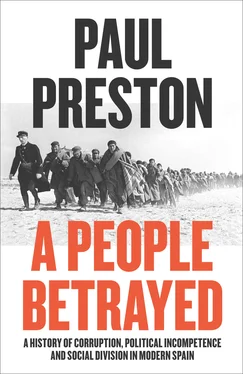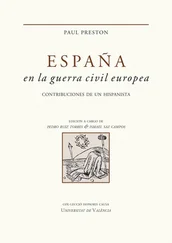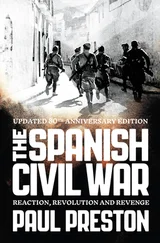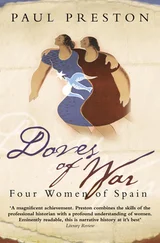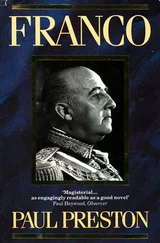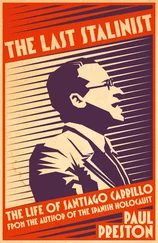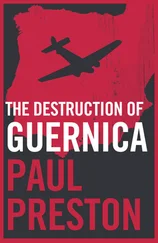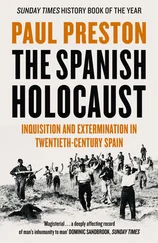The Liceu bombing came in the midst of a series of catastrophes which, taken together, did nothing to consolidate public confidence in the political establishment. In October 1893, small-scale conflict had broken out in Morocco. The military governor of the garrison town of Melilla, General Juan García Margallo, had initiated fortification works on land considered sacred by local Berber tribesmen. When the tomb of a Rifian saint was desecrated, 6,000 Rifeño tribesmen armed with Remington rifles attacked Melilla on 3 October. They were driven back by artillery fire which destroyed a mosque and so escalated the initial conflict into a jihad which necessitated considerable Spanish reinforcements. Then a strategic error by Garcia Margallo occasioned numerous Spanish losses in an action in which he himself was killed. It was rumoured that he had been shot with a revolver by a young lieutenant, Miguel Primo de Rivera, who in 1923 would establish a dictatorship. Primo was allegedly indignant that the rifles with which the Moors were armed had been sold to them by the General. No proof was ever found, but the rumour exposed the entirely justified belief that the military administration was corrupt. Incidentally, Primo de Rivera was awarded Spain’s highest military decoration, the Cruz Laureada de San Fernando, and promoted to captain. The campaign was ended only by a massive show of force that Spain could ill afford.31
Four days before the Liceu atrocity, there had taken place the greatest civilian disaster in nineteenth-century Spain. On 3 November 1893, the cargo ship Cabo Machichaco carrying dynamite caught fire in the harbour of Santander. While crew members from nearby ships and local firemen tried to extinguish the fire, a vast crowd gathered to watch. When the ship blew up, the explosion threw up a huge column of thousands of tons of water which hurled many people into the sea. The shock wave destroyed many buildings in the town and fragments of iron and body parts were blown immense distances. Five hundred and ninety people died and a further 525 were seriously injured, nearly 2 per cent of the population of the city. Among the dead were the principal military and civilian authorities including the Civil Governor whose baton of office was found several kilometres away.
In the wake of the Liceu attack, there were many demands for suppression of the anarchist movement. On 9 November, the government initiated a suspension of constitutional guarantees in the province of Barcelona which remained in force until 31 December the following year. For a brief period, vigilante groups patrolled the streets of bourgeois neighbourhoods. In July 1894, the law was strengthened to make the placing of bombs in public places or causing loss of life punishable by life imprisonment or death. It also widened the penalties against those suspected of conspiracy to commit terrorist acts. The exceptional measures did not just limit the rights of those of anarchist ideas but were also used to justify the arrests of republican workers, teachers from lay schools and other freethinkers. General Weyler’s ruthless application of these measures provided Barcelona with nearly two years of tranquillity in large part because the horror provoked by the attack on the Liceu silenced any criticism of police methods.32
Posted to Cuba, Valeriano Weyler was succeeded in Barcelona in January 1896 by the somewhat more moderate General Eulogi Despujol i Dusay. Nevertheless, mass arrests followed a further terrorist outrage on 7 June that year. A bomb exploded in the midst of the Corpus Christi procession moving towards the beautiful Gothic church of Santa Maria del Mar in the Born district of Barcelona. This spectacular annual ceremony was a local tradition that was an excuse for dressing up and it always attracted large crowds. Unusually for a religious ceremony, the monstrance with the host and the ecclesiastical dignitaries did not lead the procession but came after the principal banner. This was always carried by the Captain General with its ribbons held by the Civil Governor and the Alcalde. As the banner was entering the basilica, an explosion was heard at the rear of the procession. The bomb exploded in the Carrer dels Canvis Nous as the crowd was kneeling before the monstrance. Because, a few moments earlier, it had started to rain, the bishop and the other clerical dignitaries had hastened into the church. The bomb killed twelve people including a six-year-old girl and an eleven-year-old boy and seriously injured a further fifty-four people. Since the bishop and other dignitaries were unhurt and all the victims were working-class citizens, there were suspicions that the perpetrator was a police agent provocateur. Another theory was that the culprit, ignorant of the particular arrangements of this procession, had assumed that the military and civil authorities would have been walking behind the monstrance. Whatever the doubts, the atrocity united public opinion in general and the bourgeois press of Barcelona and Madrid, Liberal and Conservative. The entire city of Barcelona declared mourning, the street lights dimmed.33
There were widespread demands for harsh reprisals against the anarchists who were assumed to be the culprits. The almost unanimous calls for revenge were the prelude to a brutal repression which would take place over the next months. Despite international condemnation, there was a hardening of the legal measures open to the Spanish authorities with the introduction that September of the law for the repression of anarchism. A new police squad was created which imitated the techniques of the Russian Okhrana, using bribery, informers, undercover operatives and agents provocateurs commanded by a Civil Guard, Lieutenant Narciso Portas Ascanio.34 The Captain General placed the investigation in the hands of a military judge, Lieutenant Colonel Enrique Marzo Díaz-Valdivieso, who had presided over the trial after the attack on Martínez Campos that had led to the execution of six anarchists. The torture of prisoners was carried out under the supervision of Lieutenant Portas. Admitting that they had no clues, the authorities proceeded to arrest more than 500 anarchists, republicans and freethinkers. Among them were the widows of previously executed anarchists such as Paulí Pallàs, writers, women who took food to those already imprisoned and even the staff of cafés frequented by leftists. Policemen were paid a bonus for every arrest, so local prisons were bursting at the seams. Workers’ centres were closed down en masse. The majority of the anarchist and other leftist prisoners were held and interrogated in the bleak fortress of Montjuïc, the Spanish Bastille, which loured over Barcelona. The fact that among them were prominent anarchist intellectuals such as Anselmo Lorenzo, Federico Urales, Fernando Tarrida del Mármol and Teresa Claramunt and lawyers such as Pere Coromines ensured that articulate accounts of the abominable treatment of prisoners reached the outside world.35
One of the most effective of those drawing attention to the scandal was Alejandro Lerroux. Born in 1864 in Cordoba, he had started his adult life as a deserter from the army after squandering his Military Academy fees in a casino. As a fluent if rather lightweight journalist, he had acquired a spurious fame in 1893 by dint of an inadvertent victory in a duel with a newspaper editor. Elevated to the editorship of the then scandalmongering and left-wing El País , Lerroux acquired a popular following as a result of his exposés of the tortures in the Montjuïc prison. He achieved further celebrity with a series of revelations of military repression and government scandals. In March 1899, he launched a new weekly, El Progreso , in which he renewed the denunciation of what had happened in Montjuïc.36
It is probable that the explosion in the Carrer del Canvis Nous was the work of a French anarchist called either Jean or François Girault, who subsequently escaped to Buenos Aires after hiding in London.37 The alleged principal culprit, also a Frenchman, Tomàs Ascheri, a police informer, was arrested two days after the bombing. His denunciations led to the arrest of two Catalan anarchists, Josep Molas and Antoni Nogués. After being subjected to intense tortures, they named others. Horrendous cruelties endured by those subsequently arrested included the crushing of bones, the tearing out of fingernails and toenails, the application of red-hot irons to flesh and the cutting out of tongues. Under these torments, one prisoner – Luis Mas – was driven insane, five died and another twenty-eight confessed to having placed the bomb. On the grounds that one of the victims had been a soldier, the accused were tried by court martial between 11 and 15 December 1896. The prosecutor demanded the death sentence for twenty-eight men. In the event, on the basis of the confessions extracted by torture, lengthy prison sentences were imposed on sixty-six and eight were condemned to death. Three death sentences and forty-six prison sentences were commuted by the Supreme Military Court. Among 194 men sentenced to banishment were numerous famous prisoners who then played a part in drawing international attention to the inquisitorial behaviour of the Spanish authorities. Finally, despite the doubts raised about confessions extorted by torture, five were executed. Before a large crowd, Ascheri as the alleged bomber and Molas, Nogués, Mas and Joan Alsina, the alleged bomb maker, as accomplices, were shot by firing squad at dawn on 4 May 1897 in the fortress moat. The four supposed accomplices died proclaiming their innocence. The prisoners condemned to hard labour suffered inhuman conditions in Spain’s African colonies.38
Читать дальше
